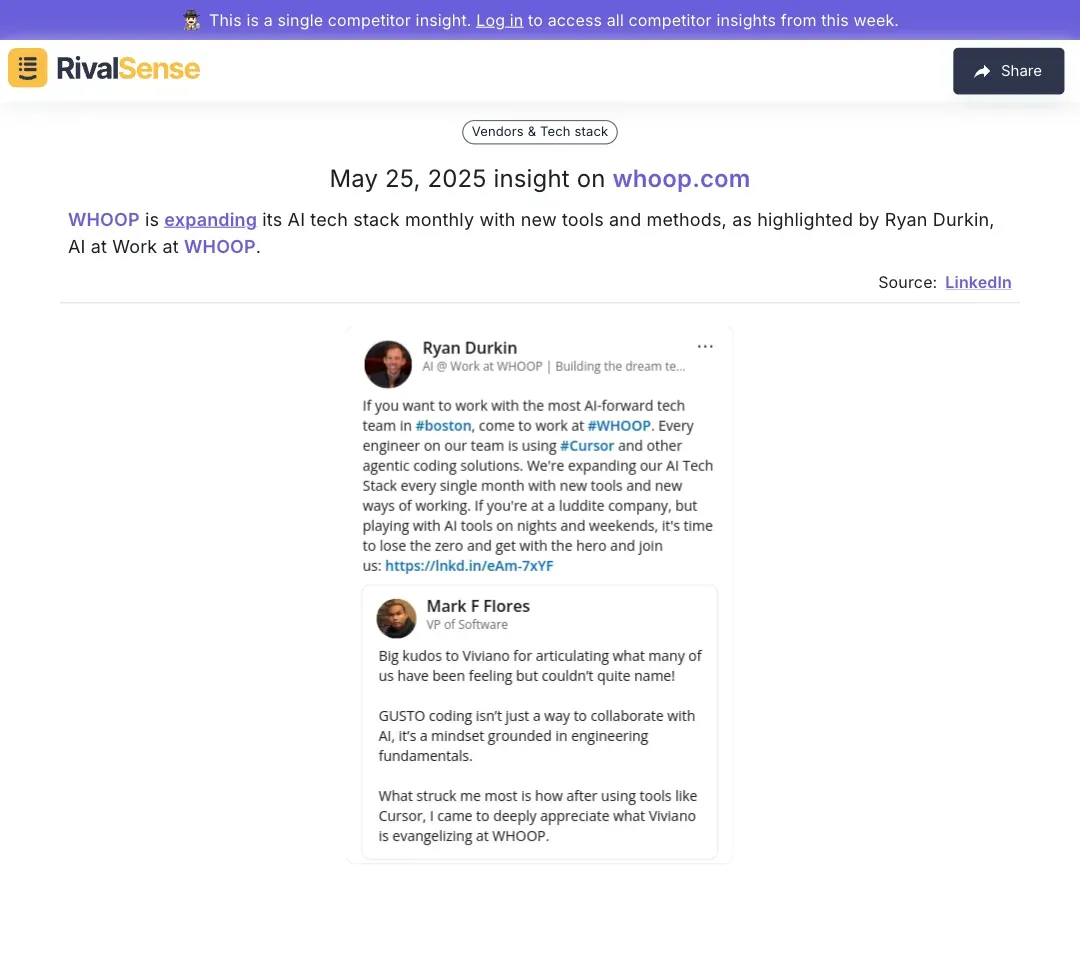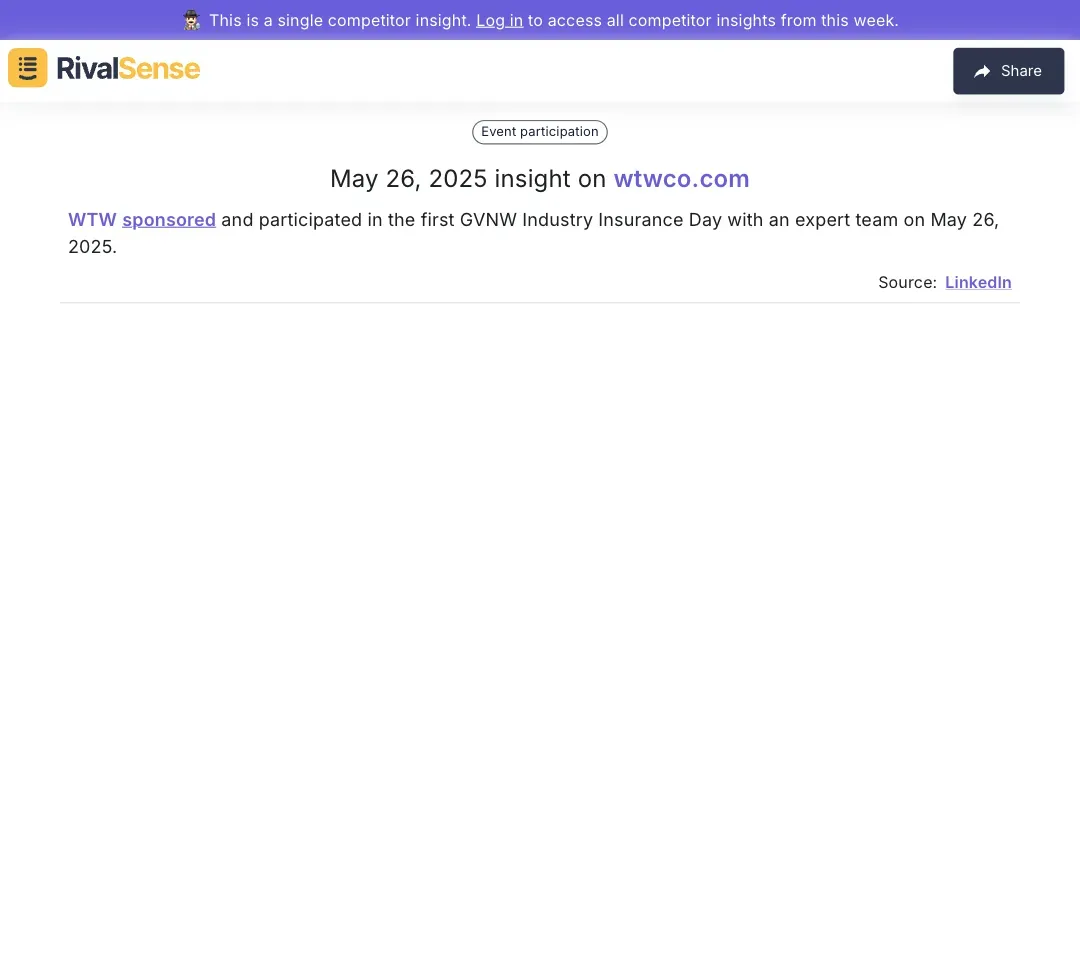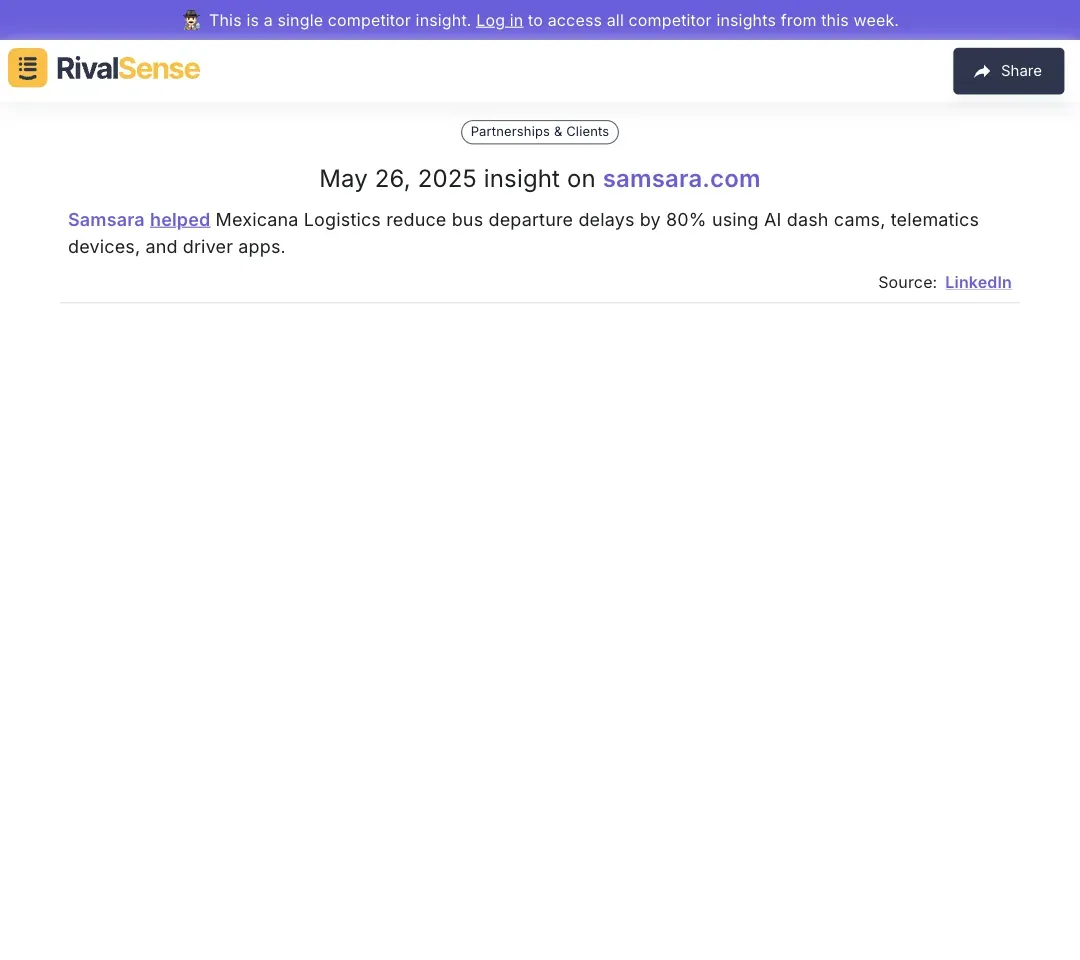Mastering LinkedIn Competitor Insights: Drive Customer Success & Outperform Rivals
In today's competitive B2B landscape, tracking competitor activities isn't just helpful—it's critical for maintaining strategic relevance. LinkedIn serves as a treasure trove of real-time insights, from product launches to customer engagement patterns. Savvy leaders use these signals to refine their own customer success frameworks and innovation roadmaps.
🔍 Why it matters: When WHOOP shared details about their monthly AI tech stack expansions through Ryan Durkin's post, observant competitors gained actionable intel about innovation pacing in wearable tech. This shows how public professional updates reveal strategic priorities.

Monitoring tech stack evolution helps anticipate feature pipelines and talent needs.
Leveraging Industry Events for Competitive Intelligence
Industry events offer unmatched opportunities to benchmark your brand while gathering strategic insights. When WTW sponsored GVNW Insurance Day with their expert team, they signaled three strategic priorities: insurance tech focus, German market expansion, and thought leadership positioning.

Tracking event participation reveals market priorities and partnership opportunities.
✅ Action Plan:
- 📅 Map competitors' event calendars using tools like RivalSense
- 🎯 Analyze their speaking topics/exhibitor materials for R&D clues
- 📊 Compare attendee engagement metrics post-event
- 🔍 Reverse-engineer their ROI calculations (lead gen vs brand building)
Utilizing Technology for Operational Efficiency
AI and IoT implementations often get showcased through customer success stories—goldmines for operational benchmarking. When Samsara highlighted how they reduced Mexicana Logistics' departure delays by 80%, they revealed:
- Effectiveness of AI dash cams
- Telematics integration patterns
- Client onboarding best practices

Analyzing implementation case studies helps identify proven tech combinations.
🚚 Logistics Sector Checklist:
- Compare maintenance cost reduction claims
- Benchmark route optimization percentages
- Audit driver training methodologies
- Track warranty partnership announcements
Expanding AI Capabilities for Competitive Edge
Continuous AI advancement separates market leaders from followers. Implement a three-phase monitoring system:
- Detection: Track R&D hires, patent filings, and conference abstracts
- Analysis: Compare deployment speed (POC → Production timelines)
- Adaptation: Identify transferable use cases for your vertical
📈 Metrics That Matter:
| KPI | Industry Benchmark |
|---|---|
| AI Model Refresh Rate | 6.2 weeks |
| Edge Computing Adoption | 41% of logistics firms |
| AI-Driven Churn Reduction | 18-29% |
Best Practices for Actionable Intelligence
Transform raw data into strategy with this framework:
💡 The 4R Method:
- Record competitor moves (product, pricing, partnerships)
- Rate impact potential (High/Medium/Low)
- Respond with timed countermeasures
- Review outcomes quarterly
🔔 Pro Tip: Set up RivalSense alerts for:
- Leadership changes
- Regulatory filings
- Beta test mentions
- Vendor contract renewals
Conclusion: From Observation to Dominance
Competitor intelligence only creates value when paired with execution. Implement these steps next week:
- Conduct 45-minute LinkedIn audit of top 3 competitors
- Map their customer success journey touchpoints
- Identify one tech differentiator to neutralize
- Schedule demo of RivalSense's automated tracking
🚀 Ready to transform insights into action? Get your free RivalSense competitor report today—discover hidden opportunities in your competitors' public moves. No credit card needed, instant access to 12-month trend analysis.
📚 Read more
👉 Mastering Competitor SWOT Analysis in Wood Manufacturing: A Strategic Guide for Leaders
👉 How CFOs Can Turn Event Participation into a Competitive Advantage
👉 Competitor Financial Analysis: Decoding Partnerships & Client Strategies for Growth 🚀
👉 B2B Legal Services: Competitive Differentiation Cheat Sheet
👉 How to Outpace Competitors in B2B Dropshipping Using Tech Adoption Frameworks
